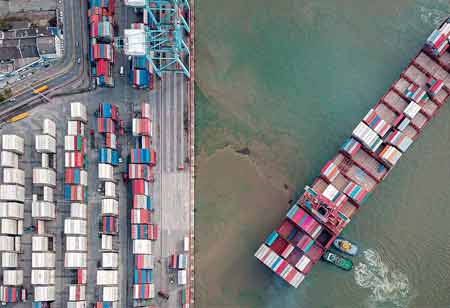THANK YOU FOR SUBSCRIBING
THANK YOU FOR SUBSCRIBING

By
Logistics Transportation Review | Monday, October 07, 2024
Stay ahead of the industry with exclusive feature stories on the top companies, expert insights and the latest news delivered straight to your inbox. Subscribe today.
Building a modern cold storage facility enhances supply chain efficiency, reduces waste, and improves product quality through advanced technology and sustainable practices for perishable goods.
FREMONT CA: Building a modern cold storage facility is a critical step in enhancing the efficiency and reliability of the supply chain, particularly in sectors such as agriculture, pharmaceuticals, and food distribution. Modern cold storage facilities leverage cutting-edge technology, including IoT-enabled temperature monitoring, energy-efficient refrigeration systems, and automated inventory management, to ensure optimal conditions for stored products. These innovations extend the shelf life of perishables, minimise waste, and improve overall product quality.
Several factors must be considered when planning a cold storage facility. A market analysis should evaluate regional demand for cold storage services. This analysis helps to assess whether there is sufficient demand and profitability potential, considering the level of competition. In addition, the size and layout of the facility should align with projected inventory needs. The design should promote efficient goods flow, minimise energy use, and ensure easy access for workers. Another important consideration is the cost, including construction and ongoing operational expenses. These include investments in insulation, refrigeration systems, temperature monitoring, and operating costs like electricity and staffing.
Designing an Efficient Layout
The layout of a cold storage facility greatly influences its operational efficiency. By optimising the design for smooth goods flow, storage space can be maximised while minimising unnecessary movement. Modular racking and vertical storage systems are helpful solutions, especially in facilities with limited floor space. Investing in automated material handling equipment like forklifts and conveyors can also enhance productivity.
Facilities should also be divided into distinct temperature zones, allowing different products to be stored under optimal conditions. For instance, fresh produce may require different settings than frozen goods. Moreover, the layout should include ample loading and unloading docks and staging areas to support seamless inbound and outbound logistics. A well-organised facility ensures timely delivery and efficient movement of goods and personnel.
Location Considerations for Cold Storage Facilities
The location of a cold storage facility significantly impacts its efficiency and operational costs. Proximity to suppliers is crucial to minimise transportation expenses and reduce product handling. Similarly, locating the facility near customers can ensure timely and efficient deliveries. Another key consideration is access to transportation infrastructure, such as highways, airports, and seaports, which can facilitate the swift movement of goods and lower shipping costs.
Energy costs are also significant, as cold storage facilities require substantial energy for refrigeration. Selecting a location with reliable and affordable energy sources can help reduce long-term operational expenses. Additionally, compliance with local zoning laws and regulations is essential to avoid legal challenges and ensure the facility meets all safety and operational standards.
Essential Equipment for Cold Storage Facilities
Proper equipment is vital to maintaining temperature control, ensuring product safety, and enhancing the operational efficiency of a cold storage facility. Energy-efficient refrigeration systems, such as blast freezers or walk-in coolers, should be installed to maintain the appropriate temperature range for stored products. Temperature monitoring systems are essential for continuous surveillance of storage conditions. These systems can send alerts if any fluctuations occur, helping to maintain optimal conditions. Implementing inventory management software is another crucial step, as it allows tracking inventory levels, managing expiry dates, and improving order fulfilment accuracy. Additionally, installing security systems, including access controls and surveillance cameras, can protect valuable inventory and ensure that safety standards are upheld.
By carefully choosing the right location and investing in the appropriate equipment, cold storage facilities can operate while meeting industry requirements. As the global market continues to evolve, modern cold storage solutions will only grow, positioning them as vital in ensuring food security, enhancing customer satisfaction, and fostering economic growth. Investing in modern cold storage infrastructure is a proactive step toward a more resilient and responsive supply chain.
I agree We use cookies on this website to enhance your user experience. By clicking any link on this page you are giving your consent for us to set cookies. More info





